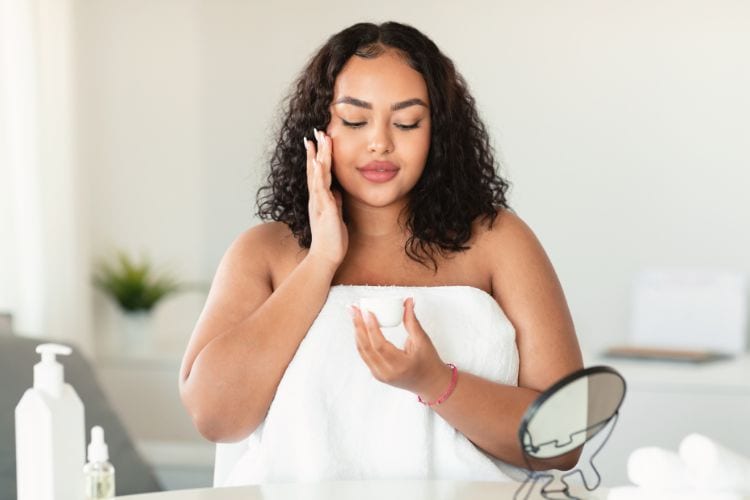Sign up for workout ideas, training advice, reviews of the latest gear and more.





When it comes to skincare, using the right products matters, but the order in which you apply them is just as important. Even the most luxurious serums and creams can lose their effectiveness if applied incorrectly. The concept of layering skincare products ensures that every formula penetrates properly and delivers maximum benefits. If you’ve ever felt confused about whether moisturizer goes before oil or when to apply sunscreen, you’re not alone.
This comprehensive guide will break down the art and science of layering skincare—from morning routines to evening rituals—so you can achieve glowing, healthy, and radiant skin.
Before diving into the exact steps, let’s understand why layering is so crucial.
Each product has a unique consistency and purpose. Lightweight, water-based formulas penetrate quickly, while heavier creams form a protective barrier. If applied in the wrong order, lighter products may not reach your skin at all.
Layering correctly ensures that active ingredients—like retinol, vitamin C, or hyaluronic acid—are absorbed efficiently and don’t get blocked by heavier products.
Some ingredients don’t pair well together. Proper layering minimizes irritation, prevents pilling (when products ball up on your skin), and ensures harmony between actives.
The universal rule to remember is:
Apply products from the thinnest to thickest consistency.
That means starting with lightweight, water-based solutions and ending with heavier oils or creams that seal everything in.
Your morning routine should focus on protection, hydration, and preparing your skin for the day ahead.
Begin with a gentle cleanser to remove overnight oil, sweat, and impurities. A foaming or gel cleanser works well for oily skin, while cream or milk cleansers are ideal for dry skin.
After cleansing, apply toner to rebalance your skin’s pH and add a layer of hydration. Essences, common in Korean skincare routines, deliver lightweight moisture and prep your skin for serums.
Morning is the best time to use vitamin C serum. It brightens skin, reduces pigmentation, and protects against environmental damage. Apply a few drops and press gently into the skin.
Apply a lightweight eye cream to hydrate the delicate under-eye area and reduce puffiness. Always use your ring finger to apply—its light pressure prevents tugging.
Lock in hydration with a lightweight moisturizer. Gel-based moisturizers suit oily skin, while richer creams work best for dry skin types.
Sunscreen is non-negotiable. Apply broad-spectrum SPF 30 or higher every single day, even indoors. This step shields your skin from UV rays, prevents premature aging, and reduces the risk of skin cancer.
The evening routine is about repairing, nourishing, and helping the skin regenerate while you sleep.
At night, start with an oil-based cleanser to break down makeup, sunscreen, and sebum, followed by a water-based cleanser to deep clean pores.
Use toner to refresh your skin and prepare it for treatments. Hydrating mists with aloe vera or rose water can also add soothing moisture.
This is when you apply exfoliating acids (like AHAs/BHAs) or retinol. These ingredients help with cell turnover, unclog pores, and fight fine lines. Alternate nights between exfoliants and retinoids to avoid irritation.
To balance active ingredients, follow up with a hydrating serum containing hyaluronic acid or niacinamide. These replenish moisture and calm the skin barrier.
Use a richer eye cream at night to combat dryness and fine lines. Look for peptides or ceramides for extra repair.
Seal in all the goodness with a nourishing night cream. Look for formulations with ceramides, peptides, or hyaluronic acid.
For extra hydration, finish with a facial oil. Oils like rosehip or squalane lock in moisture and provide antioxidants.
Masks should be applied after cleansing but before serums. Use hydrating masks 2–3 times a week and clay masks once a week if you have oily skin.
Acne spot treatments should go directly on clean skin after cleansing and toning but before serums or moisturizers.
You can spritz hydrating mists in between layers or after makeup for a dewy finish.
Even with the best intentions, mistakes happen. Here’s what to avoid:
Knowing which ingredients work together ensures maximum benefits:
Your skin’s needs change with the seasons.
Patience matters when layering skincare. Ideally, wait 30 seconds to 1 minute between each step. For stronger actives like retinol or acids, wait up to 2 minutes to ensure absorption and reduce sensitivity.
Learning how to layer skincare products can feel overwhelming, but once you understand the basics—lightest to heaviest, actives before moisturizers, sunscreen last in the morning—you’ll unlock the full potential of your skincare investments.
Consistency is key. Stick to your routine, listen to your skin, and make adjustments as needed. Whether your goal is hydration, anti-aging, or brightening, proper layering ensures your products work synergistically for healthy, radiant skin.
Stay up to date on the latest women’s health, fitness and lifestyle trends and tips.